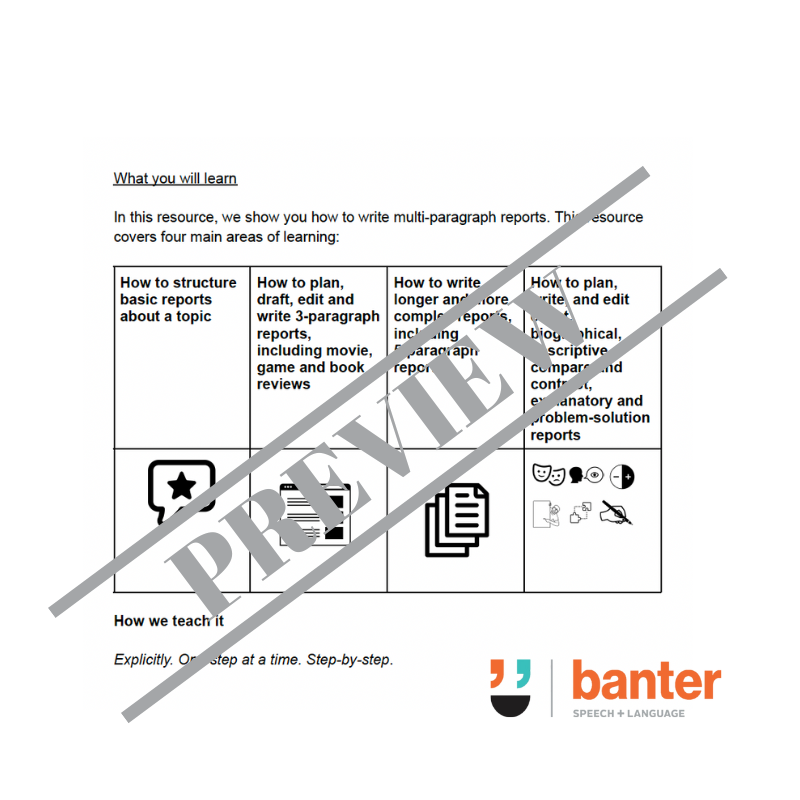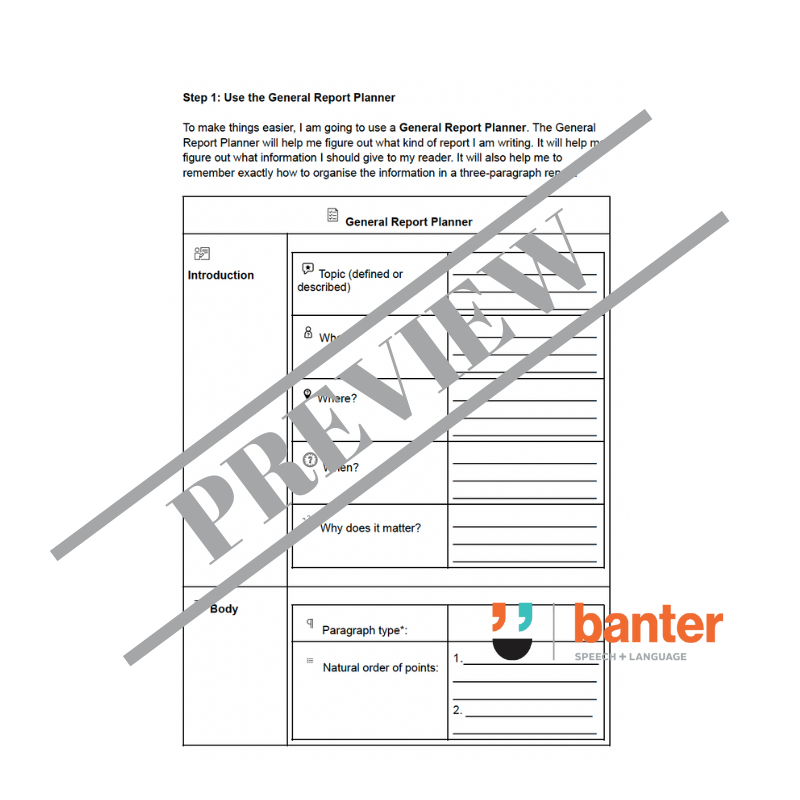Banter Speech & Language
Think Then Write 5: Multi-Paragraph Information Report Writing Foundations Workbook
Think Then Write 5: Multi-Paragraph Information Report Writing Foundations Workbook
Couldn't load pickup availability
Think, then Write Workbook 5: Multi-Paragraph Information Report Writing Foundations
What we cover in this resource
A step-by-step, illustrated, fully-scripted, and scaffolded 120+ page guide to help students learn the basics of writing multi-paragraph reports.
Includes modules for multi-paragraph book, movie and game review, biographical reports, event-based reports, descriptive reports, compare-and-contrast reports, explanatory reports, and problem-solution reports.
How we teach it
Report-writing is complex. We break it down into 13 interactive and fully-scripted steps:
1. First, we define the word “report”, and explain what we mean by multi-paragraph reports”, with examples. We revisit what we mean by a topic, and demonstrate the importance of staying on topic when writing reports.
2. Second, we look at the main parts of a report, including an introduction, body, and a conclusion. We present a general scaffold for writing a report introduction.
3. Third, we look at an example report - a biographical report - and then break it down into its parts to see how it is structured.
4. Fourth, we highlight three important points to remember when writing any report: (a) stay on topic; (b) provide enough details for your reader to understand the content; and (c) present your content in the natural or most logical way for the kind of report you are writing.
5. Fifth, we show you how to write a 3-paragraph report, with models, scaffolding, and step-by-step guidance. We show you how to write 3-paragraph movie, video game, and book review reports using an “I do, we do, you do” sequence.
6. Sixth, we talk about writing longer and more complex reports. We note that the basic structure and writing process remain the same, but the content and paragraph types included in the report depend on the topic and purpose of the report.
7. Seventh, we teach how to write Event Reports. We introduce an Event Report Planner, to be used with the First Draft and STOPS Editing Scaffolds, and the Transitions Helper, with an example report and practice exercises.
8. Eighth, we teach how to write Biographical Reports with planners, examples and scaffolds.
9. Ninth, we teach how to write Descriptive Reports with planners, analysers, scaffolds, example reports and practice exercises.
10. Tenth, we teach how to write Compare-and-Contrast Reports, with a planner, scaffolds and transitions helper. We include an example report and practice exercises.
11. Eleventh, we teach how to write Explanatory (Expository) Reports. We introduce two Explanation Report Planners (for “explain why” and “explain how” reports), to be used with scaffolds and the Transitions Helper. We include example reports and practice exercises. We also revise some key explanation techniques, reviewing some of the work we did at the paragraph level.
12. Twelfth, we teach how to write Problem-Solution Reports with a planner, and scaffolds. We include an example report and practice exercises.
13. Thirteenth, we summarise what we’ve learned, outline next steps and provide recommendations for further reading, with acknowledgements.
Share






















